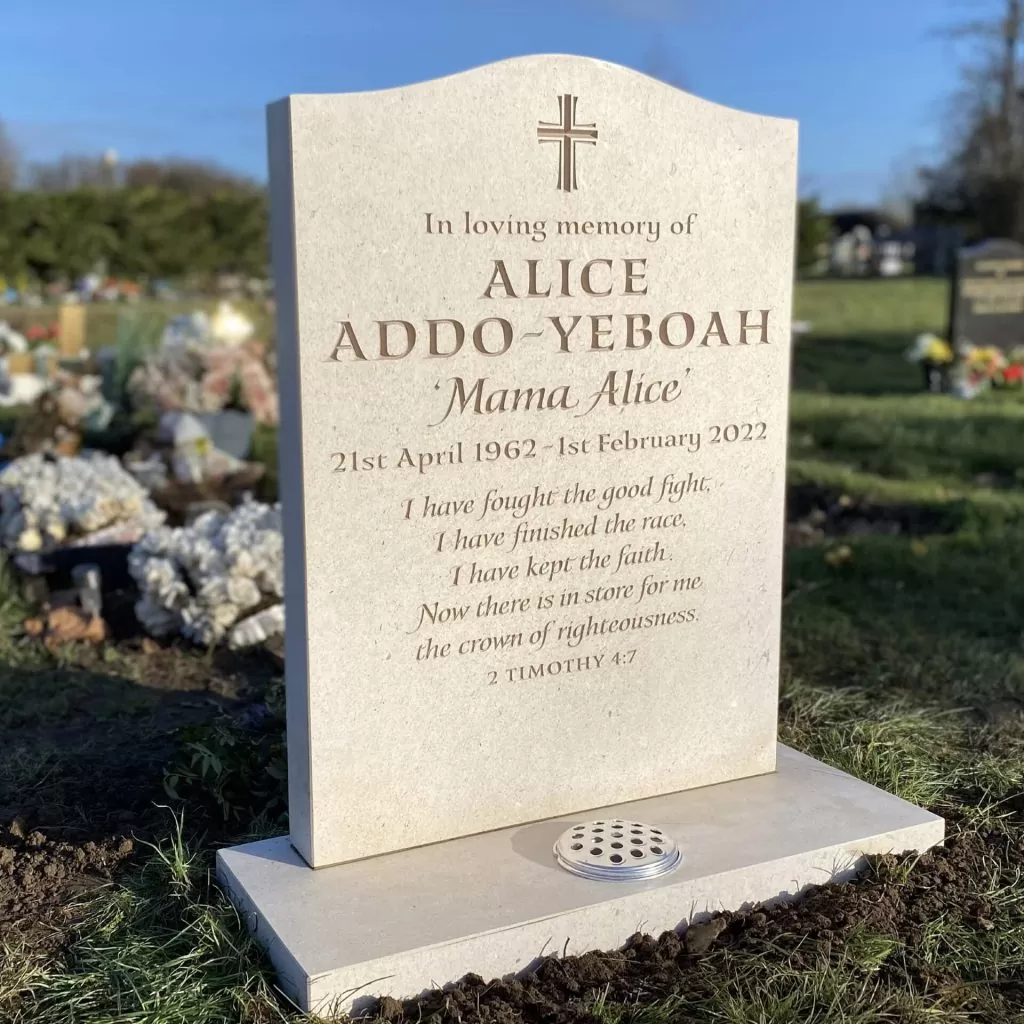A Guide to Headstone Regulations
Understanding Memorial Regulations
A Guide to Headstone Regulations
This comprehensive guide to headstone regulations helps you understand the essential rules for creating a memorial for your loved one. From size restrictions and material specifications to design guidelines and installation requirements, we’ll help you navigate the various requirements across UK cemeteries and churchyards.
As experienced memorial masons, we work closely with local authorities and church officials to ensure every headstone we create fully complies with current regulations whilst maintaining the highest standards of craftsmanship.

If you’d like to commemorate your loved one with a headstone, there are a number of rules that must be followed; otherwise, you run the risk of the headstone being removed. Naturally, at this already distressing time, paperwork is probably the last thing on your mind. That’s why the team at Artisan Memorials has created this helpful guide to headstone regulations, so you’re aware of just what to expect.
Who has the legal right to place a headstone?
So, can anyone put a headstone on a grave? To put it simply, no. The only person with the right to place a headstone is whoever is named on the Deed of Grant. This is a legal document that confirms ownership of a burial plot and grants exclusive rights over what can be done with the grave, including headstone installation.
Should a person not named on the Deed of Grant unlawfully erect a headstone, the registered owner of the plot has the right to have it removed. That’s why it’s so important to understand who has the right to install a headstone, to prevent any nasty legal disputes further down the line.
Do you need permission to install a headstone?
Typically, you will always need permission granted in writing from the cemetery or churchyard in order to install a headstone; there is usually a fee attached to this, too. This process normally takes up to four weeks and all relevant documentation must be signed by the registered owner of the grave. When you choose a trusted stonemason like Artisan Memorials, we can arrange the paperwork on your behalf so that you’ve got one less thing to worry about at this already difficult time.
Are there rules about what type of headstone you can have?
There is no universal policy about what a headstone should look like; it entirely depends on the burial ground in question. Most cemeteries will have clear rules over the size, style, materials and inscriptions that are allowed, to ensure every headstone is in keeping with the setting. However, regulations are typically a little stricter in religious burial grounds; for example, most churchyards encourage inscriptions that are in keeping with Christianity and use ‘simple and reverent’ language. Therefore, it’s always best to check any specific restrictions at your chosen cemetery before finalising your headstone design.
It’s also crucial to ensure the headstone is of a robust nature, so most cemeteries will stipulate that a headstone must be made of stone to be permitted. There are several reasons for this; plastics and acrylic resin lack weather resistance, longevity and also aren’t in keeping with more traditional aesthetics. Furthermore, these materials can become brittle over time, causing them to break and leave behind a sharp surface that is a safety risk.
From slate and sandstone to Portland and Nabrinesia limestone, here at Artisan Memorials, we only craft headstones from the highest quality stone to ensure durability. Our experienced stonemason will work closely with you to create a beautiful, thoughtful design that is fully compliant with all headstone regulations.
Artisan Memorials provide quality headstones and gravestones to customers in the following areas, Kent, Ashford, Maidstone, Tunbridge Wells, London, St Albans, Hemel Hempstead and Watford.
If you’d like to craft a lasting tribute that will stand the test of time, get in touch with our experts today.
We work all over the UK, offering the complete service, from design to installation
08081960935
